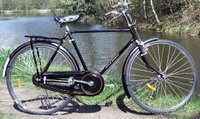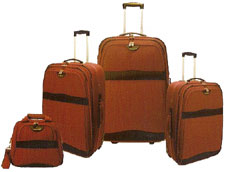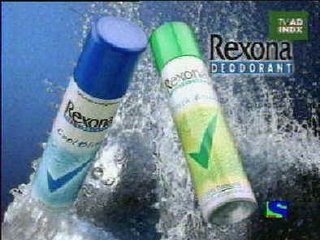Brand : Everyday
Company: Nestle
Indian milk powder market is at a nascent stage . While the dairy market in India is a huge market, milk powders were not able to garner a major share in this market. While the loose milk market is estimated to be around Rs470 billion, the processed milk market is only Rs 10000 crores. Milk powder market is only 7% of the whole milk market. 46% of the mil k produced in India is consumed in the liquid form while 47% are used for making products like ghee etc only 7% is used for making western products like butter milk powder etc.
k produced in India is consumed in the liquid form while 47% are used for making products like ghee etc only 7% is used for making western products like butter milk powder etc.
There are two types of milk powders
a. Whole milk powder
b. Skimmed milk powder.
Everyday is a major player in the Dairy whitener category that is a part of the skimmed milk category. The dairy whiteners are used for tea making.
Everyday was launched in 1986 now have a market share of around 22%. The category is facing the major obstacle of consumer perception towards this category. The consumers perceive that loose milk is fresh. And with abundant milk supply, milk powders were able to penetrate only 4.7% of the entire market.
While Everyday faces stiff competition from Amul's Amulya and Britannia's Milkman, the major competition is from the ordinary milk. Now consumers use milk powder as a standby for packaged milk and also for making tea and coffee. Although, milk powders have the advantage of shelf life and convenience, that is not enough to fight the competition from packaged milk.
The only strategy is to add value to the milk powder other than the expected attributes of convenience and shelflife. Although Amulya tried to differentiate focusing on the " free from insolubles" it is not enough to expand the category.
Conventional marketing theory says either expand the market or increase the usage /usage situations .
When you look at this product, the usage right now is limited, one cannot use this other than m aking tea, that is a major drawback for milk powders. Hence within these limitations, Everyday has to add more value. The price is expensive compared to loose milk so without adding more value, the market will not expand. Everyday have launched a new " low calorie" variant of the whitener. Also an extension to the ghee category has been made.
aking tea, that is a major drawback for milk powders. Hence within these limitations, Everyday has to add more value. The price is expensive compared to loose milk so without adding more value, the market will not expand. Everyday have launched a new " low calorie" variant of the whitener. Also an extension to the ghee category has been made.
The milk powder market, it it had to grow may have to show that it is a better option compared to the liquid form. Adding more nutrients , variants and identifying multiple uses are the only option in this nascent market.
Till then have a cup of tea.
Company: Nestle
Indian milk powder market is at a nascent stage . While the dairy market in India is a huge market, milk powders were not able to garner a major share in this market. While the loose milk market is estimated to be around Rs470 billion, the processed milk market is only Rs 10000 crores. Milk powder market is only 7% of the whole milk market. 46% of the mil
 k produced in India is consumed in the liquid form while 47% are used for making products like ghee etc only 7% is used for making western products like butter milk powder etc.
k produced in India is consumed in the liquid form while 47% are used for making products like ghee etc only 7% is used for making western products like butter milk powder etc.There are two types of milk powders
a. Whole milk powder
b. Skimmed milk powder.
Everyday is a major player in the Dairy whitener category that is a part of the skimmed milk category. The dairy whiteners are used for tea making.
Everyday was launched in 1986 now have a market share of around 22%. The category is facing the major obstacle of consumer perception towards this category. The consumers perceive that loose milk is fresh. And with abundant milk supply, milk powders were able to penetrate only 4.7% of the entire market.
While Everyday faces stiff competition from Amul's Amulya and Britannia's Milkman, the major competition is from the ordinary milk. Now consumers use milk powder as a standby for packaged milk and also for making tea and coffee. Although, milk powders have the advantage of shelf life and convenience, that is not enough to fight the competition from packaged milk.
The only strategy is to add value to the milk powder other than the expected attributes of convenience and shelflife. Although Amulya tried to differentiate focusing on the " free from insolubles" it is not enough to expand the category.
Conventional marketing theory says either expand the market or increase the usage /usage situations .
When you look at this product, the usage right now is limited, one cannot use this other than m
 aking tea, that is a major drawback for milk powders. Hence within these limitations, Everyday has to add more value. The price is expensive compared to loose milk so without adding more value, the market will not expand. Everyday have launched a new " low calorie" variant of the whitener. Also an extension to the ghee category has been made.
aking tea, that is a major drawback for milk powders. Hence within these limitations, Everyday has to add more value. The price is expensive compared to loose milk so without adding more value, the market will not expand. Everyday have launched a new " low calorie" variant of the whitener. Also an extension to the ghee category has been made.The milk powder market, it it had to grow may have to show that it is a better option compared to the liquid form. Adding more nutrients , variants and identifying multiple uses are the only option in this nascent market.
Till then have a cup of tea.











